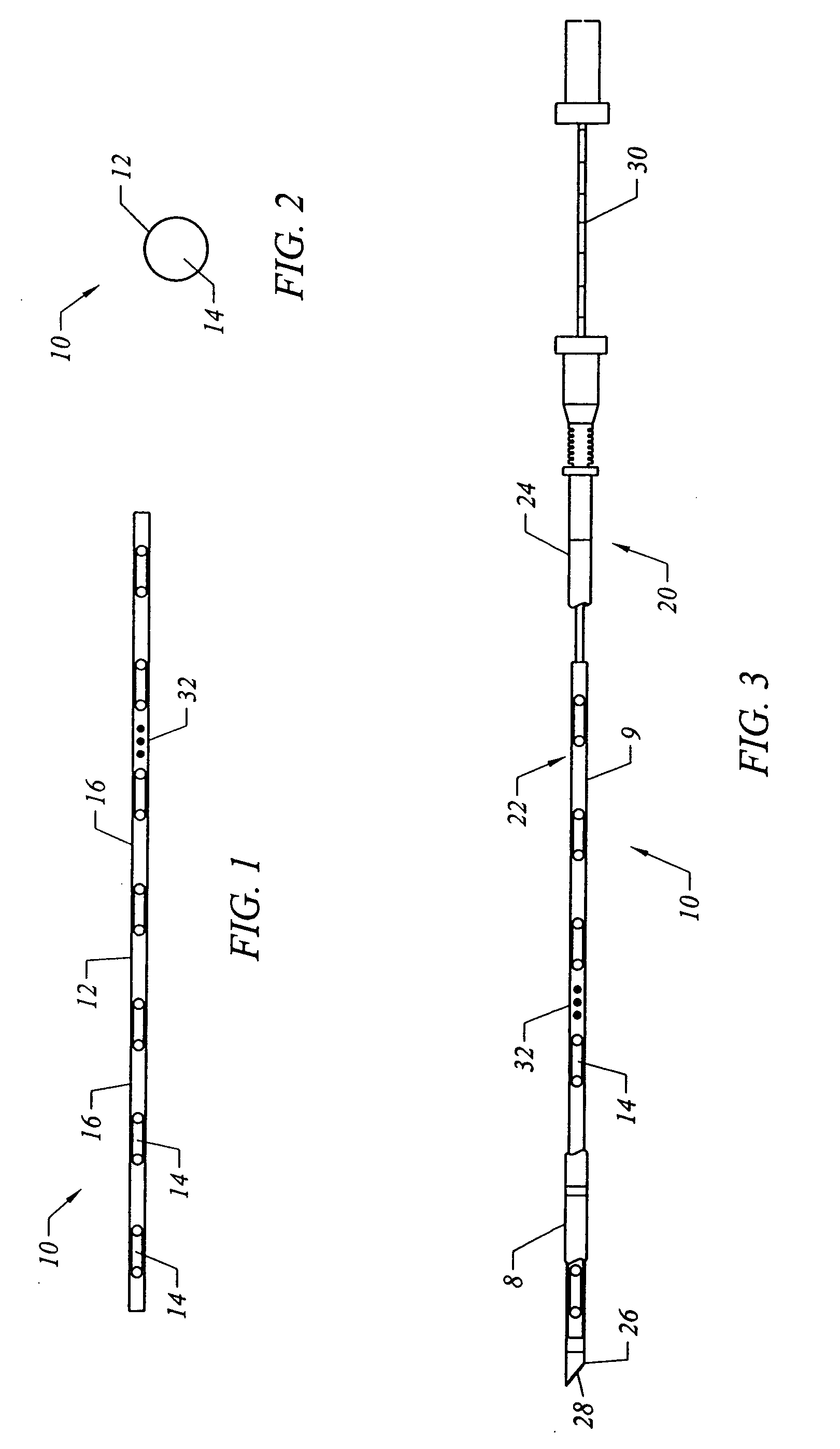Delivery system and method for interstitial radiation therapy
a radiation therapy and interstitial technology, applied in the direction of radiation therapy, nuclear engineering, coatings, etc., can solve the problems of difficult manipulation, seed deposited in a track, and the suture of the braided suture does not assist in the placement of seeds, so as to achieve optimal seed distribution
- Summary
- Abstract
- Description
- Claims
- Application Information
AI Technical Summary
Benefits of technology
Problems solved by technology
Method used
Image
Examples
Embodiment Construction
[0038] In accordance with an embodiment of the invention, a substantially axially, semi-rigid and longitudinally flexible elongated member made of material, which is bio-absorbable in living tissue, is provided for insertion in tumors. A plurality of radioactive seeds are encapsulated and positioned in a predetermined array in the member in the desired spaced relationships.
[0039] The seeds can be of various types having low energy and low half-life such as Iodine seeds, known as I-125 seeds, consisting of a welded titanium capsule containing iodine 125 absorbed on a silver rod, or Palladium 103 seeds. Examples of radioactive seeds used to manufacture the therapeutic element appear in Table 1 below.
TABLE 1Seed Manufacturers and Common Types of Seeds.PART NUMBERMANUFACTURERSEED NAMEIODINE12580040-AAmersham 6702OncoSeed80040-BAmersham 6711RAPID Strand80040-CNorth American ScientificIoGold80040-DBest IndustriesBEST Iodine-12580040-EBebigSymmetra80040-FMills BiopharmaceuticalsProstaSe...
PUM
| Property | Measurement | Unit |
|---|---|---|
| Length | aaaaa | aaaaa |
| Flexibility | aaaaa | aaaaa |
| Strength | aaaaa | aaaaa |
Abstract
Description
Claims
Application Information
 Login to View More
Login to View More - R&D
- Intellectual Property
- Life Sciences
- Materials
- Tech Scout
- Unparalleled Data Quality
- Higher Quality Content
- 60% Fewer Hallucinations
Browse by: Latest US Patents, China's latest patents, Technical Efficacy Thesaurus, Application Domain, Technology Topic, Popular Technical Reports.
© 2025 PatSnap. All rights reserved.Legal|Privacy policy|Modern Slavery Act Transparency Statement|Sitemap|About US| Contact US: help@patsnap.com


